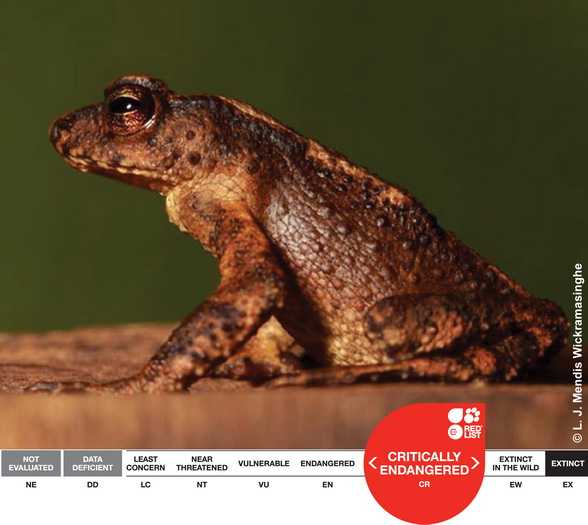
The Sri Lankan Kandyan Dwarf Toad, Adenomus kandianus, is one of the rarest toads in the world. This Dwarf Toad was first discovered in 1872 and last seen in 1876. Thought to be extinct for more than a century, it was rediscovered in 2009 in the Peak Wilderness Sanctuary on the island of Sri Lanka. About 100 individuals were discovered over the course of a two-year study in the region. This toad is now listed in IUCN Redlist of Threatened SpeciesTM as ‘Critically Endangered’.
The Sri Lankan Kandyan Dwarf Toad has a yellowish belly and body skin covered with small tubercles. Endemic to Sri Lanka, it is only known to occur in one single site in the Peak Wilderness Sanctuary. Although its scientific name suggests that it might be first collected near the city of Kandy in Central Sri Lanka, all of the Central Province was referred to as Kandy in the late 19th century when this species was first described. This toad is a stream-dwelling species that occurs in montane cloud forest. It can be found at night on rocks of river banks and presumably has a larval stage that develops in water.
The population of Sri Lankan Kandyan Dwarf Toads is in decline and continues to be threatened by pollution and illegal deforestation for tea plantations. Its breeding habitat is under threat as streams are being blocked or diverted due to human activities. Improved conservation management inside the sanctuary is urgently needed to protect this species.
